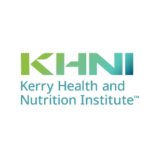In March of 2019, the National Academy of Medicine has updated the Dietary References Intakes (DRI) for sodium and potassium last established in 2005. The DRI for potassium has decreased, while sodium has an entirely new recommendation category.

The Dietary Reference Intakes are science-based nutrition recommendations created by the National Academy of Medicine and in some cases serve as a basis for nutrition recommendations globally, alongside recommendations from organizations like the World Health Organization. These recommendations are based on the body of research relating nutrient intake to disease risk and health outcomes.
The updated values
Sodium – a new recommendation called the ‘ Chronic Disease Risk Reduction’ intake has been established at 2,300 mg of sodium per day for adults. This means adults consuming more than that value should aim to reduce their intake to reduce chronic disease risk.
The previous recommendations that were communicated for sodium were 1,500 mg per day for most adults (1,200-1,300 mg for older adults) with a daily upper limit of 2,300 mg.
For a comparison, the World Health Organization recommends consuming less than 2,000 mg per day of sodium.
Potassium – the daily recommendation for potassium has decreased substantially from 4,700 mg per day to 3,400 mg per day for men and 2,600 mg per day for women.
The World Health Organization recommends consuming at least 3,510 mg per day of potassium.
What are the roles of sodium and potassium in health?
According to the Center for Disease Control, “Potassium and sodium are electrolytes needed for the body to function normally and help maintain fluid and blood volume in the body. However, a person can get high blood pressure by consuming too much sodium and not enough potassium.”
Both are important electrolytes for our body to function, but when we have an imbalance of them, it can lead to health risks.
What impact will the change have?
For potassium, the change in daily recommendation will impact claims and formulation in the United States. The FDA will be requiring potassium to be labeled on all packaged food products when the update to nutrition facts labels legislation goes live. This update will mean that products will now only need 340 mg of potassium per serving to be considered a ‘good source’, rather than 470 mg.
For sodium, there is not much that will change from a food labeling perspective. Nutrition facts labels have used 2,300 mg as the reference for the percent daily value for sodium for some time now, and this will continue moving forward. Expect sodium reduction initiatives to continue for packaged and restaurant foods across the globe.
From a public health perspective, these new values might provide more realistic targets for people to achieve. The average sodium intake globally is 3,950 mg per day, which far exceeds the previous recommendation of 1,500 mg. For potassium, fewer than 5% of Americans met their daily recommendation in the past. The decrease in potassium recommendation combined with the mandated labeling of potassium on products will hopefully help Americans get closer to achieving their recommended daily potassium intakes.

 We bring the voice of science to some of the most challenging questions facing the food and beverage industry day to day through our network of over 1000 Kerry scientists, external collaborators, and our Scientific Advisory Council. Our content comes straight from scientists and experts in nutrition, taste, food, and sensory sciences to make sure we are providing up-to-date, credible information to guide people shaping the future of food.
We bring the voice of science to some of the most challenging questions facing the food and beverage industry day to day through our network of over 1000 Kerry scientists, external collaborators, and our Scientific Advisory Council. Our content comes straight from scientists and experts in nutrition, taste, food, and sensory sciences to make sure we are providing up-to-date, credible information to guide people shaping the future of food. 

